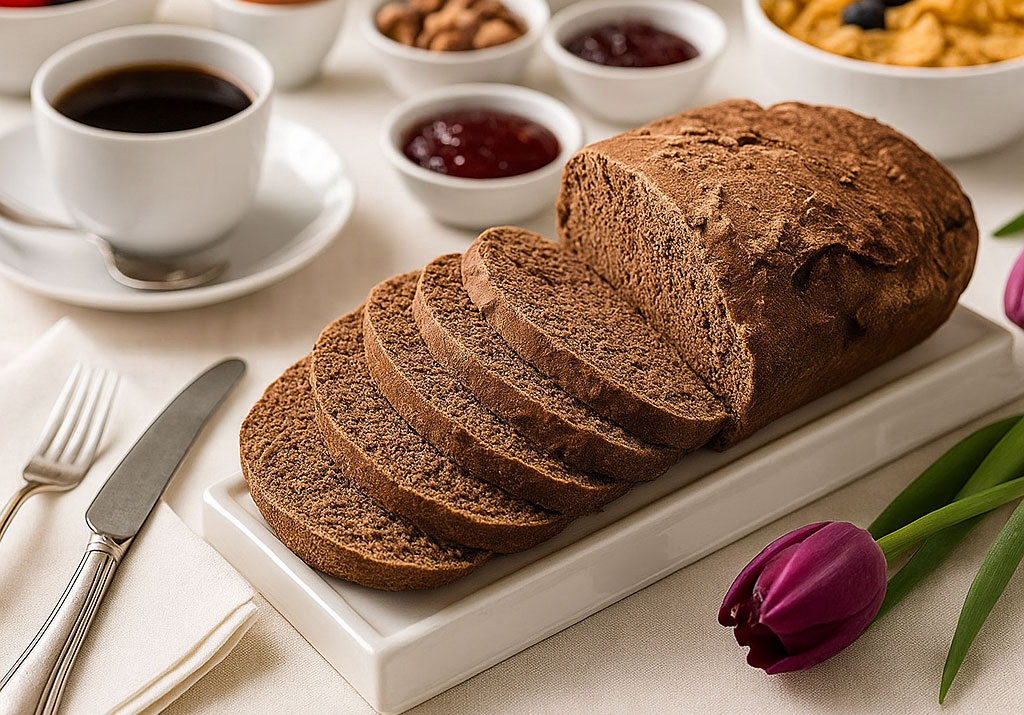Recipe
The Ultimate Guide to Baking Pumpernickel
The Allure of Pumpernickel: A Baker’s Quest for Perfection
I remember my first attempts at baking Pumpernickel bread like they were yesterday. The excitement of pulling a dark, dense loaf from the oven, only to be met with a crumb that was either too dry, too crumbly, or lacking that characteristic deep, malty sweetness. It was a humbling experience, a stark reminder that some breads demand not just skill, but an intimate understanding of their very essence. For home bakers and aspiring professionals, the journey to mastering a loaf as complex as Pumpernickel can feel daunting, riddled with questions about rye flour, long bakes, and that elusive perfect texture.
But fear not, for by the end of this article, you will not only unravel the scientific mysteries behind Pumpernickel’s unique character but also gain the practical techniques to bake a truly authentic loaf in your own kitchen. We’ll explore the crucial role of ingredients, the nuances of fermentation, and the magic of a prolonged, low-temperature bake. And as we delve into these depths, remember that achieving professional results often hinges on having the right tools. That’s where companies like MBICO come into play, standing as a leading manufacturer of high-quality bakery equipment, empowering bakers worldwide to consistently achieve exceptional quality.
The Science Behind Pumpernickel’s Unique Character
Pumpernickel is more than just a dark bread; it’s a testament to the transformative power of time, temperature, and specific grain chemistry. Its distinct flavor and texture are deeply rooted in scientific principles.
Rye Flour: A Grain Apart
Unlike wheat, rye flour contains very little gluten-forming protein. Instead, it’s rich in pentosans, a type of polysaccharide that absorbs a remarkable amount of water, giving rye dough its characteristic stickiness. This also means rye dough doesn’t develop the elastic network we associate with wheat bread. It’s why Pumpernickel has a dense, closed crumb rather than an open, airy one. Understanding this fundamental difference is crucial; attempting to knead rye dough like wheat will only lead to a sticky, unmanageable mess.
The Magic of Maillard and Caramelization in a Slow Bake
Pumpernickel’s signature dark color and complex, slightly sweet, malty flavor aren’t from added molasses or coloring. They’re the magnificent result of the Maillard reaction and caramelization occurring over many hours at low temperatures, often with steam. The Maillard reaction, a chemical dance between amino acids and reducing sugars, creates thousands of flavor compounds and deep brown pigments. Caramelization, the browning of sugars, adds further layers of sweet, nutty, and slightly bitter notes. This slow, gentle process allows these reactions to develop fully, transforming simple rye flour into a symphony of flavor.
Leavening: A Slow, Steady Rise
Traditional Pumpernickel often relies on sourdough starter, or a combination of starter and commercial yeast. Sourdough not only provides leavening but also contributes acidity, which is vital for breaking down rye’s pentosans and inhibiting enzymatic activity that could otherwise degrade the dough. This creates a more stable structure and contributes significantly to the bread’s distinctive tangy depth.
My Journey to Mastering Authentic Pumpernickel
For years, Pumpernickel was my Everest. I’d follow recipes, but the results were always just good, never extraordinary. Then, during an apprenticeship in Germany, I witnessed true Pumpernickel baking. It wasn’t about aggressive kneading or quick proofing; it was about patience, precise temperature control, and a deep respect for the dough’s slow transformation. I learned the critical importance of a consistent bakery oven capable of maintaining stable, low temperatures for extended periods, sometimes for 16-24 hours. This revelation changed everything for me. It transformed my understanding of baking from a series of steps into a carefully choreographed chemical process.
Crafting Your Own Pumpernickel: A Step-by-Step Guide
While an industrial oven might be overkill for a home kitchen, the principles remain the same. Here’s how you can achieve a remarkable Pumpernickel loaf at home:
Ingredients: Precision is Key
- Rye Flour: Use whole grain medium or dark rye flour for authentic flavor and color.
- Sourdough Starter: An active rye sourdough starter is highly recommended for flavor and structure.
- Water: Lukewarm water for mixing.
- Salt: Essential for flavor and controlling fermentation.
- Optional: A touch of molasses or dark malt extract can enhance color and sweetness, though traditionally, the color comes from the long bake.
The Mixing Process: Less Kneading, More Folding
Combine all ingredients until just uniformly hydrated. This dough will be very sticky. Resist the urge to knead vigorously. Instead, perform a few sets of stretch-and-folds over the first hour or two. This gently develops what little structure rye can form without overworking it.
The Extended Fermentation: Patience is a Virtue
Allow the dough to ferment at a cool room temperature (around 65-70°F or 18-21°C) for 6-12 hours, or even longer if using only sourdough. It won’t double in size like wheat dough, but it will become slightly puffy and show signs of activity. This slow fermentation develops complex flavors.
The Low and Slow Bake: Harnessing Steam and Time
This is where the magic happens. Pumpernickel is typically baked in a sealed vessel, often a Pullman pan with a lid, to trap steam and prevent a hard crust from forming too early. Preheat your oven to a low temperature, around 225-275°F (107-135°C). Place the covered pan in the oven and bake for a minimum of 6-8 hours, or even up to 12-16 hours for a truly authentic dark loaf. The presence of steam, easily managed with good bakery equipment, is crucial for maintaining a moist environment, allowing the internal temperature to rise slowly and facilitating the Maillard reactions without drying out the bread. Some advanced home ovens have steam injection, but a pan of hot water or regular spritzing can also work.
Cooling and Maturing: The Final Transformation
Once baked, resist the urge to slice immediately. Pumpernickel benefits immensely from a lengthy cooling and maturing period, ideally 24-48 hours, wrapped tightly. During this time, the flavors continue to meld and deepen, and the texture becomes perfectly moist and sliceable. It’s a true testament to delayed gratification.
Beyond Pumpernickel: Versatility in Your Home Bakery
The principles we’ve discussed for Pumpernickel—understanding grain characteristics, mastering fermentation, and controlling oven environments—extend far beyond this single loaf. Whether you’re baking hearty whole-wheat loaves, delicate enriched doughs, or even experimenting with flatbreads, the precision and consistency offered by quality ovens are paramount. Just as a commercial pizza and food ovens requires precise temperature management for a perfect crust, so too does your Pumpernickel demand a stable, predictable baking environment.
Embrace the Pumpernickel Journey
Baking Pumpernickel is a journey of patience, scientific curiosity, and profound reward. It teaches us to slow down, observe, and trust the process. By understanding the unique properties of rye, embracing the extended fermentation, and respecting the power of a long, slow, steam-rich bake, you can transform simple ingredients into a bread that embodies centuries of culinary tradition.
This weekend, challenge yourself. Try extending your Pumpernickel’s bake time by an extra hour at a lower temperature, and notice the profound depth of flavor that emerges. The results will astound you.







Explore MBICO's categories
Bakery equipment
13 Products
bulk and semi-bulk bread baking ovens
3 Products
Bulk Breads Baking equipment
14 Products
Confectionery equipment
7 Products
Mini ovens
3 Products
Pizza and food ovens
4 Products
Baking equipment
25 Products
Bakery oven
5 Products
Tafton baking ovens
3 Products
Barbari baking ovens
4 Products
Sangak bakery ovens
3 Products
Lavash baking ovens
3 Products
Pastry and confectionery ovens
3 Products
Baking ovens
10 Products
Mobile baking machines
4 Products
Explore MBICO's products
Verticsl Dough Bowl Lift
Automatic Production Line for Baking Sangak Bread
Portable Rotary Semi – Automatic Oven for Baking Traditional Breads
Bread Slicing Machine
Toast Mould (Loaf Pans)
Mobile Kitchen Container
Spiral Mixer
Dough pouring machine